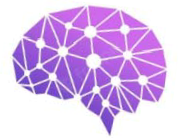
qEEG screening
Service code s9017
Short description
When the head receives a strong blow, the difference in the movement between the brain and the skull produces forces that result in TBIs. The causes for TBI are “shear” forces in which rapid acceleration/deceleration results in different brain parts moving at different rates, thus stretching axonal fibers. A percussion wave travelling through the brain and impacting the skull diagonally opposite the initial impact site can cause further contusion – “contre coup” injury, whilst shear forces at the boundary between white and grey matter can result in axonal shearing.
Scientific studies demonstrated that qEEG screening may help to objectively assess the brain’s electrical activity typical for TBI.
Recently (September, 2004) qEEG was approved by the American Federal Drug Administration (FDA) as a medical device suitable for use as an adjunct in the diagnosis of brain patterns consistent with head injuries (TBI) and Post-Concussion Syndrome (PCS).
A pathological residual and/or a compensation to injury is persistent and detectable by qEEG many months or years after traumatic brain injury.
qEEG studies have shown discriminant accuracy as high as 96% in the detection of mild head injury(1) and greater than 76% accuracy in outcome prediction one year after a TBI(2). Discriminant analysis between mild and severe TBI groups showed classification accuracy of 96%, sensitivity 96%, and specificity 97%(3).
Results
By performing this qEEG screening you will get the information on:
- whether you have a qEEG pattern typical for TBI and
- the potential degree of severity.
Notes:
- The results of qEEG analysis are put in context of published scientific studies, the individual’s health history, complaints, symptoms and psychometric and other evaluations (if available).
- Present psychotropic medication use may affect the results.
To place a service order, use the following email:
References
- Thatcher RW, Walker RA, Gerson I, et al: EEG discriminant analyses of mild head trauma. Electroencephalogr Clin Neurophysiol 1989; 73: 93–106.
- Thatcher RW, Cantor, DS, McAlaster R, et al: Comprehensive predictions of outcome in closed head injury: the development of prognostic equations. Ann NY Acad Sci 1991; 620: 82–104.
- Thatcher RW, North DM, Curtin RT, et al: An EEG Severity Index of Traumatic Brain Injury. J Neuropsychiatry Clin Neurosci. 2001; 13(1): 77-87.